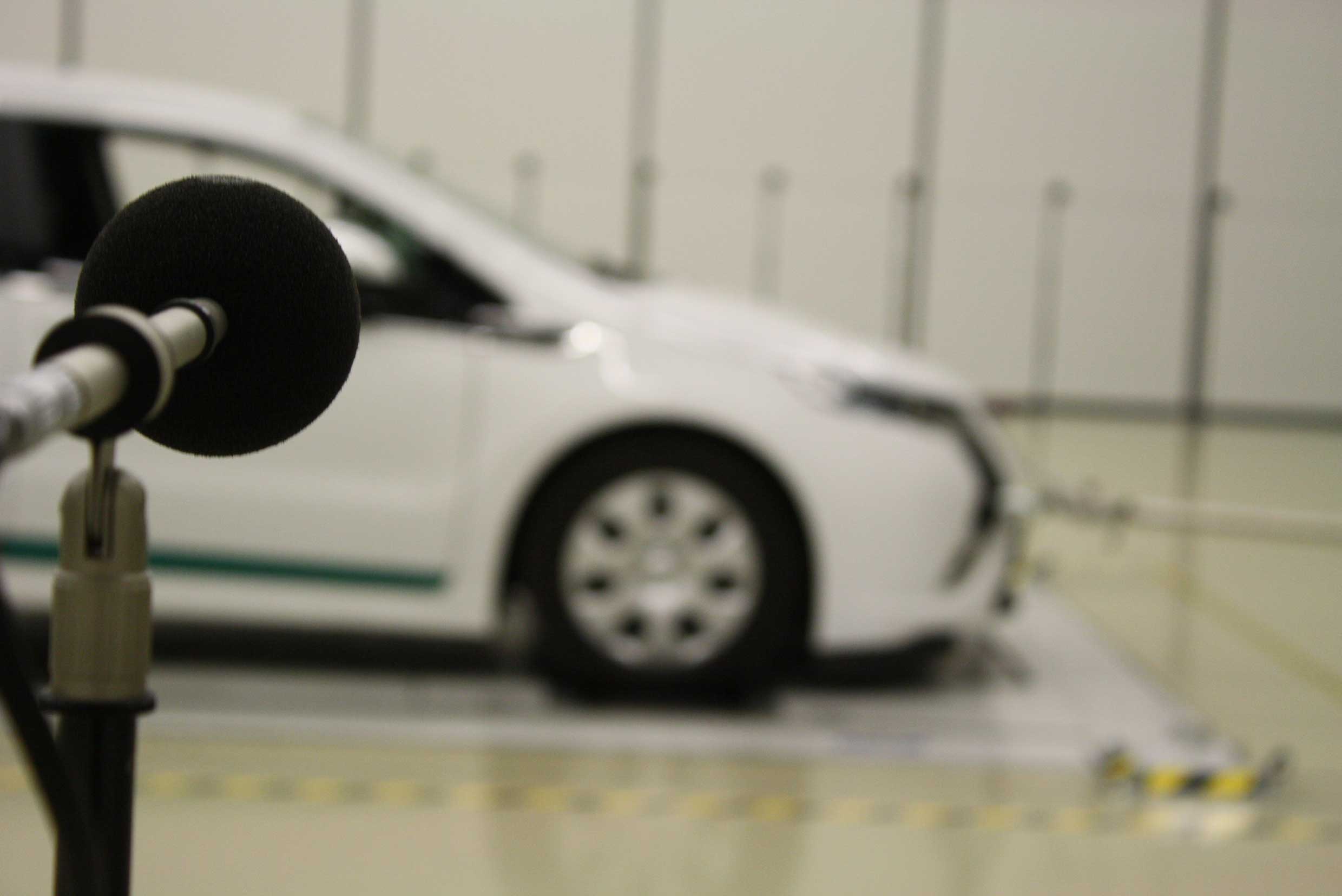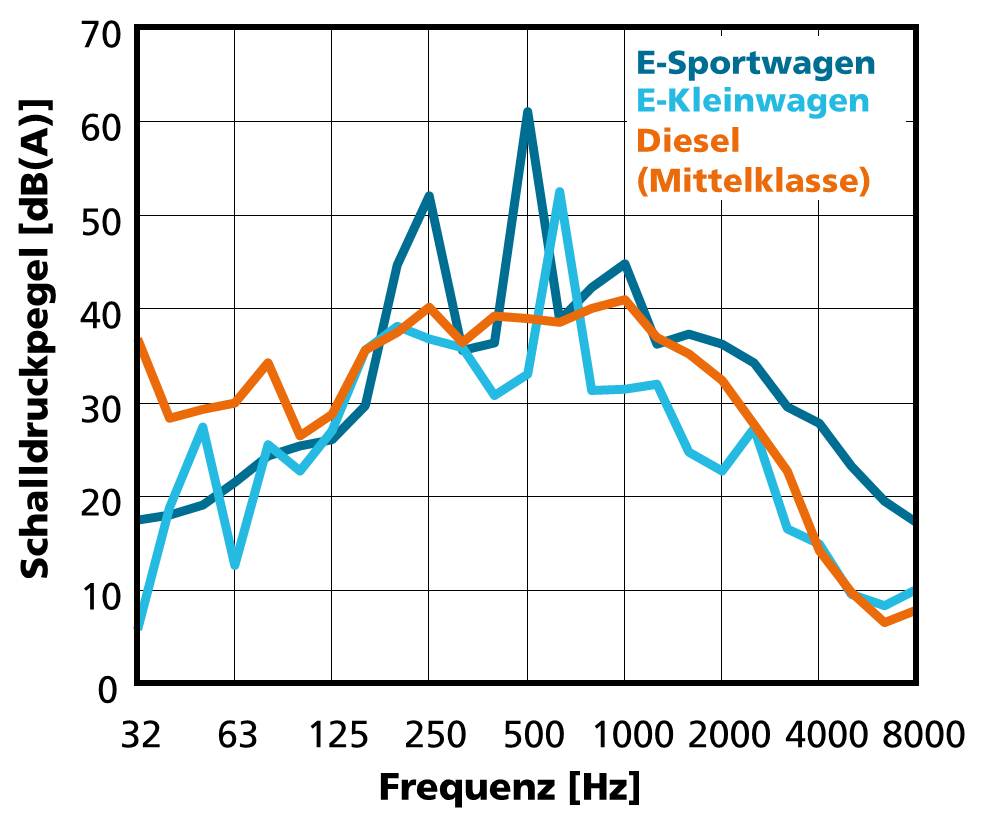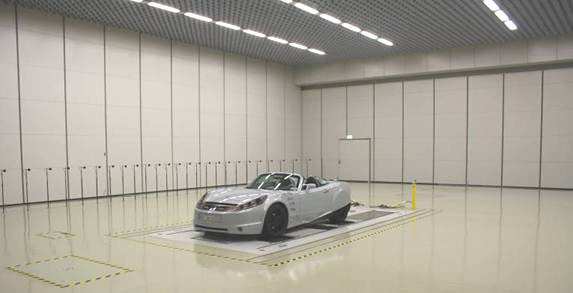Is noise control getting obsolete in times to come or must electric cars become louder to be heard by pedestrians at crosswalks? These and many other questions are in the focus of the research of acousticians at the Fraunhofer IBP not only in the context of the project "Fraunhofer System Research for Electro-Mobility" funded by the BMBF, which investigates the various aspects of future car concepts, and drive systems, as well as the storage and distribution of energy. One aspect that must not be underestimated is the acceptance and security of electric cars by users and the environment.
The Sound of E-Mobility - The New Sound for New Cars
Project goals
The all-wheel roller test bench of the Fraunhofer IBP, where each wheel is individually controlled, allows the measurement of interior and ambient noise of all kinds of motor vehicles, and to determine and assess the specific differences generated for example by the drive systems. Test methods like the decoupling and cleat tire tests, and modern methods of noise analysis and sound design allow the determination and analysis of other noise components from vehicle parts. This is intended to prevent the occurrence of unwanted rattling and humming in the vehicle, and to give the vehicle the desired sound character in terms of sound quality by targeted influencing of the noise contributions. Moreover, important research topics of Vehicle Acoustics are the enhancement of the driver’s concentration by lower sound levels in the vehicle, the improvement of speech intelligibility for mobile phones and conversations in the vehicle, voice control and acoustical alarm signals as well as the development and testing of acoustic components.
Project results
Measurements on electric cars show: Due to the reduction of the powertrain noise ancillary units become louder in the driver’s perception. But also the powertrain is not free of noise either and can show new, unfamiliar characteristics. Also the sound in the vehicle must be comfortable to be accepted and to give the impression of functionality and security, since at present the drivers are still missing the familiar sound criteria of the combustion engine and gearbox.
The noise of the wind and tires continues to dominate the acoustic events on highways. This is why solving the rolling noise problem will gain in importance. E-vehicles are not soundless as concerns the ambient noise, but hearing habits are also still unknown here.
Project duration | Project partners | Project sponsors
The Fraunhofer lead project Electromobility was launched by the German federal government as a publicly funded project ("Fraunhofer System Research on Electromobility - FSEM I") in 2009 as part of the economic stimulus package.
In less than two years, a total of 33 institutes have carried out a wide range of research and development work on electromobility and presented it by means of several demonstrators.
In 2012, the Fraunhofer-Gesellschaft has decided to continue these activities in the lead project Electromobility.


